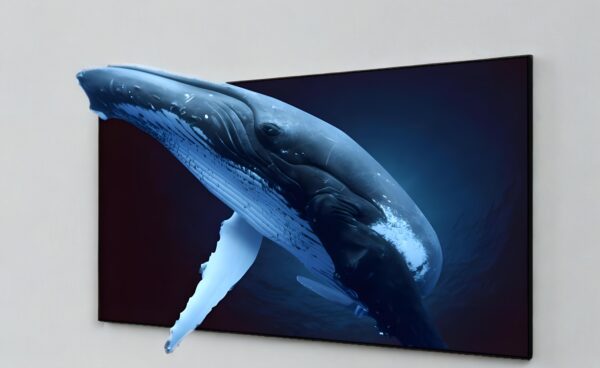Consumers often face challenges ranging from visual distortions to software incompatibilities. Knowing how to diagnose and fix these problems not only saves time but also extends the lifespan of your device. With the global 3D display market expected to grow at a CAGR of 19.1% between 2024 and 2030, understanding these common issues is crucial for both new and seasoned users.
1. Visual Distortions on 3D Computer Screens
a) Ghosting and Crosstalk Effects
One of the most frequent complaints among 3D computer screen users is ghosting, where overlapping images create a blurry or doubled visual effect. Crosstalk, which happens when left and right eye images bleed into each other, is another common issue.
Fixes and Tips:
- Adjust viewing angles: Most 3D screens have an optimal range (usually ±30 degrees horizontally).
- Update drivers: Outdated graphics drivers often fail to sync properly with 3D rendering.
- Calibrate screen settings: Tweak contrast, brightness, and refresh rates to minimize ghosting.
b) Flickering or Black Frames
Flickering can occur due to high refresh rates clashing with 3D rendering. Active shutter glasses users are particularly susceptible because synchronization errors cause noticeable black frames.
Fixes and Tips:
- Lower refresh rates: Switch from 240Hz to 120Hz to stabilize the image.
- Check hardware connections: Loose HDMI or DisplayPort cables may disrupt 3D signal transmission.
2. Software and Compatibility Issues
a) Incompatibility with Applications and Games
Not every application is optimized for 3D computer screens. Users often report crashes or poor 3D performance in certain programs.
Fixes and Tips:
- Verify 3D support: Check the software’s official documentation for 3D compatibility.
- Install middleware: Tools like TriDef 3D or NVIDIA 3D Vision can bridge compatibility gaps.
- Keep firmware updated: Manufacturers often release patches addressing software conflicts.
b) Poor 3D Performance on Older Systems
Even if a screen supports 3D, outdated hardware may struggle to render complex graphics smoothly.
Fixes and Tips:
- Upgrade GPU: A minimum of NVIDIA GTX 1660 or AMD RX 5600 XTis recommended for modern 3D applications.
- Close background apps: Free up system resources for better 3D rendering performance.
3. Hardware Limitations and User Errors
a) Narrow Viewing Zones
Many 3D computer screens, especially those using lenticular lenses, have narrow sweet spots. Moving outside these zones leads to image distortion.
Solutions:
- Use adjustable stands: Align the screen height and tilt to maintain optimal viewing.
- Choose wider viewing angle models: Newer screens offer up to 170-degree horizontal visibility.
b) Short Lifespan of Active Shutter Glasses
For users relying on active shutter systems, glasses may suffer from rapid battery drain or lens flickering.
Solutions:
- Switch to passive 3D systemsif frequent usage is expected.
- Replace batteriesand clean sensors regularly to prolong lifespan.
4. Comparing 3D Computer Screens with Alternatives
While VR headsets and AR devices offer immersive 3D experiences, 3D computer screens remain attractive for:
- Ease of use: No headgear required; ideal for long work sessions.
- Higher resolutions: Many support up to 8K at 60Hz, outperforming most VR displays.
- Shared viewing: Teams can collaborate without individual setups.
However, these screens do require more careful setup to avoid the common problems listed above.
5. Pro Tips for Maintaining 3D Computer Screens
To prevent future issues:
- Regularly clean the screen surface and glasses sensorsto avoid dust-related distortions.
- Run monthly diagnosticsusing manufacturer tools to check for dead pixels or alignment errors.
- Avoid prolonged static imagesto reduce the risk of screen burn-in.
Understanding the typical problems with 3D computer screens empowers users to address them proactively. From correcting visual distortions to ensuring software compatibility, these solutions can help maintain optimal performance. Investing a little time in troubleshooting and maintenance ensures that your 3D experience—whether for gaming, design, or professional use—remains smooth and immersive.
FAQs
Q1: Why does my 3D computer screen show double images?
This is likely due to ghosting or crosstalk. Adjust your viewing angle, update your drivers, and check for proper screen calibration to fix it.
Q2: Can I use a 3D computer screen without special glasses?
Yes, some autostereoscopic 3D screens (like lenticular displays) work without glasses. However, for active shutter systems, glasses are necessary.
Q3: How often should I update my 3D screen’s firmware?
It’s recommended to check for updates every 3-6 months to ensure compatibility with new software and improved performance.






